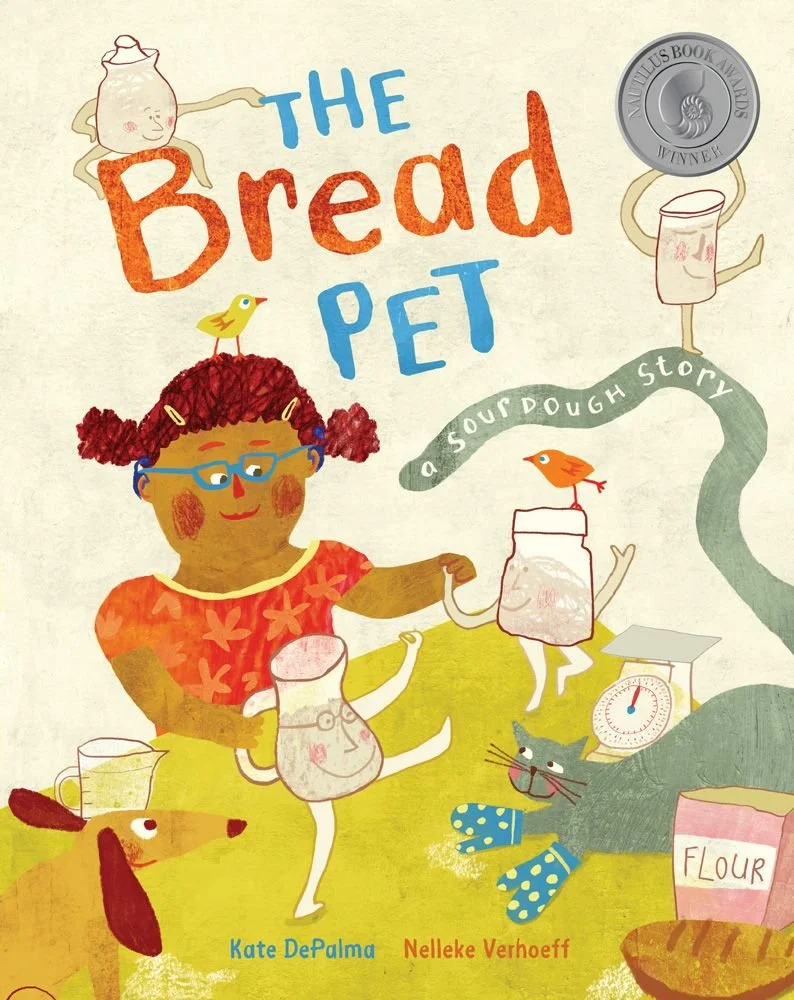Cook Up Something Fun with Kids in the Kitchen
Reading Time: 5 mins, 5 secs
Cooking with your kids can start as soon as they are sitting in a highchair. Cooking can be fun and connect people of all ages and backgrounds. There are skills kids can learn at every age, which makes it safe and fun for everyone. A good rule of thumb is to keep the number of ingredients in line with their age.
Below are more details about what age is appropriate regarding skill and safety.
Babies – under 2
Babies don’t actually cook, but through play, they develop fine motor skills. Scooping, pouring, and mimicking your activities are the first steps to developing an interest. Next time you are making dinner, put your little one in the highchair with a couple of small, non-breakable containers containing a little water and some spoons or scoops. This is also a great time to introduce the difference between hot and cold.
Toddlers – 2-4
Two to four-year-old kids love to explore independent learning, especially with their hands. Assembly cooking is a great opportunity for independence as well as reinforcing counting and fine motor skills. Toddlers can help with baking, pouring, counting, stirring, and kneading. Another opportunity for them to cook is by assembling items like pizzas and sandwiches. Spreading sauces, sprinkling cheese, and adding their favorite meats and veggies. While the pizza is in the oven, discuss what is happening as it bakes: the cheese melting, the crust baking, and the toppings cooking.
Early Elementary – 5-7
This is a great age to start introducing kitchen tools along with the rules for kitchen safety. Kitchen tools that are good for this age are pizza cutters, veggie peelers, juicers, apple slicers, cheese graters, and measuring tools. Peeling, cutting, and grating are all tasks that can be safely done from either a sturdy step stool or seated at the kitchen table. Fruit salad made of easy-to-cut fruit gives the chance to try out different tools and allows for the selection of their favorites, giving them an opportunity to put their own twist on a classic. Also adding citrus juice to the salad to keep apples and bananas from browning is a lesson in chemistry.
Late Elementary – 8-10
An eight to ten-year-old’s capability can really vary from child to child. Not only maturity but height is a factor too. Kitchen knives, stoves, and other safety precautions can be introduced around this age. Menu planning with the classic introductory meal would be breakfast, scrambled eggs, pancakes, fruit, and some sausage. Cracking and whisking eggs are fun, as well as measuring and mixing pancakes, and it all can be cooked on the stove. Changing liquids to solids is a yummy science that can be such a gas.
Choosing the Right Recipes
Cooking does not need to be complex or elaborate. Choose age-appropriate recipes based on skill and safety. Here are some of our favorites, and we included the skills required in case your assistance is needed.
Lou’s Favorite Ice Cream (Stirring and Pouring)
Stained Glass Window Cookies - (Melting, Stirring, and Cutting)
Vegetable Fritters (Peeling, Shredding, Mixing and Stovetop Cooking)
Chicken Tenders (Mixing, Handling Raw Meat and Baking)
And don’t forget to try Lou’s favorite Peanut Butter Bites (Dog Treats)!
Having some staple items on hand so they can make something for themselves is a great way to keep kids interested in cooking when time is not on your side. Here are some very simple, kid-friendly ideas:
Peanut butter and jelly sandwich
Yogurt, fruit, and granola parfait
Tortilla roll-ups with meat and cheese
Practice Kitchen and Food Safety
Teaching best practices in the kitchen from the very start instills good habits.
Hair should be up and off the face to keep hair out of the food and avoid a potential fire when using the stove.
Frequent hand washing keeps germs (and handprints) from spreading.
Handling hot items with hot pads or oven mitts reduces burns.
Before using an appliance, do a little “tour” to review where your hands can and can’t go.
Discuss fire safety, and keep baking soda nearby to put out any fires; never put water on a grease fire.
Ask before you lick! Sometimes, it is safe to lick the spoon, and other times it's not. Always ask first.
Using the Right Tools
Special tools are not needed but can make it easier for kids to see over the counter, leverage working space, and allow for better gripping. Here are some ideas of what you can add to your kitchen.
Everybody Cleans Up
Cleaning is a part of cooking. A clean working area before and after is not just for your own sanity but is also a part of food safety. Here are some age-appropriate suggestions for clean-up duties.
Toddlers: Wipe up messes and throw garbage away.
Early Elementary: Load the dishwasher and sweep the floor.
Late Elementary: Hand wash larger items and take out the garbage.
Learning to cook is a lifelong skill that everyone should have, and the more fun it is, the more they will enjoy it and continue building up their skills. Not everyone will be a master chef someday, but everyone needs to eat!
Fun Cooking Activities and Recommended Reads for Every Child's Age
Cooking with children is not only about preparing food—it's a joyful way to teach valuable life skills and create lasting memories. Here's a brief guide to introducing kids of all ages to the kitchen, ensuring each activity is both safe and fun.
The Littlest Chefs: Babies (Under 2)
Engagement Through Play: Introduce fine motor skills with simple activities like scooping and pouring using non-breakable containers and spoons.
First Lessons: Teach them the basics of hot and cold safely.
Eating the Alphabet: Fruits & Vegetables from A to Z
(1993) by Lois Ehlert
A vibrant board book starring an assortment of fruits and vegetables from around the world.
Goodnight Veggies
(2020) by Scott O'Dell, Elizabeth Hall
Why are all the veggies so tired? Find out in this wonderful board book that celebrates community, gardening, and the importance of taking care of ourselves.
Exploring and Learning: Toddlers (2-4 Years)
Hands-On Fun — Toddlers can participate in assembly cooking, reinforcing their counting and motor skills through tasks like stirring, kneading, and assembling pizzas.
Safety First — Always supervise and choose safe, simple tasks.
Amara’s Farm (Where in the Garden?)
(2021) by JaNay Brown-Wood
The first in the Where In the Garden? series, this delightful story also includes a recipe to try with your child.
The Tickle Fingers Toddler Cookbook: Hands-on Fun in the Kitchen for 1 to 4s
(2016) by Annabel Woolmer
A practical, hands-on cookbook book that makes it easy and fun to cook with your toddler.
Early Elementary (5-7 Years): Becoming Kitchen Helpers
Tool Time: Introduce safe kitchen tools for peeling, cutting, and grating, with supervision. Making a fruit salad can be a great start.
Kitchen Safety: Emphasize the rules for safe kitchen tool use.
Our Little Kitchen
(2020) by Jillian Tamaki
A lively and colorful picture book with bonus recipes at the end.
The Bread Pet
(2020) by Jillian Tamaki
A fun tale of family, community, and sourdough! Includes sourdough starter and bread recipes.
Late Elementary (8-10 Years): Expanding Culinary Skills
More Responsibility: With varied abilities at this age, children can start using kitchen knives and stoves under guidance. Preparing a simple breakfast can teach basic cooking skills and food science.
Advanced Safety: Teach comprehensive safety practices, including knife handling and stove safety.
The Complete Cookbook For Young Chefs
(2018) by America’s Test Kitchen Kids
Build a new generation of confident cooks with delicious recipes this cookbook
Cool Kids Cook
(2016) by Jenny Chandler
A cookbook that features classic recipes along with more adventurous options and fun food facts to keep kids engaged as they learn new skills in the kitchen.
Key Tips for Cooking with Kids
Select Age-Appropriate Recipes: Choose recipes that match your child's age and skills, like stirring, pouring, cutting, and baking.
Practice Safety: Teach and model kitchen safety, including handling hot items, using appliances safely, and understanding fire safety.
Use the Right Tools: Equip your kitchen with child-friendly tools to make cooking easier and safer for them.
Cleaning Up: Encourage clean-up as part of the cooking process, with tasks appropriate to their age.
Cooking is a valuable skill that nurtures independence, creativity, and a sense of responsibility. By engaging children in cooking activities suited to their age, you’re not just teaching them how to prepare food but also instilling in them a love for culinary arts and the importance of safety and cleanliness.
Share this article


























